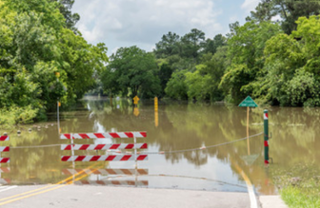
 Images relating to the destructive power of Hurricane Harvey are jaw-dropping. Homes and businesses are submerged in water. Streets have turned into rivers, and freeways look like storm-tossed seas. In an interview on NBC’s Meet the Press, FEMA administrator, William Brock Long, forecasted that recovery from Harvey will take years.
Images relating to the destructive power of Hurricane Harvey are jaw-dropping. Homes and businesses are submerged in water. Streets have turned into rivers, and freeways look like storm-tossed seas. In an interview on NBC’s Meet the Press, FEMA administrator, William Brock Long, forecasted that recovery from Harvey will take years.
While Texas rests in one of our country’s tropical storm hotspots, Hurricane Harvey is a brutal reminder that a natural disaster can strike anywhere, at any time. Even New England, though tucked away in our country’s uppermost eastern corner, is not immune. In 2012, Hurricane Sandy produced damaging winds and triggered power outages in Massachusetts, Vermont, and Rhode Island.
Winter is just around the corner with its potential for gale-force winds and blizzards that could cripple companies in the Northeast. Only the organizations that have robust disaster recovery plans in place will survive a major natural disaster.
Staying High and Dry
The size of the area damaged by Hurricane Harvey reinforces the importance of ensuring that your recovery site is distant from your primary data center. Secondary sites need to be in a geographically distinct area so that they are not affected when power outages and flooding occur at the primary site.
During “Superstorm Sandy” in 2012, some major websites realized their mistake in using a disaster recovery provider located in Lower Manhattan. The HuffPost, Gawker, and Buzzfeed were all knocked offline when their provider, Datagram, was overwhelmed by a flood.
Using cloud for disaster recovery gives your company access to geographically dispersed data centers. Cloud infrastructure is available through the private networks or the internet; so your recovery site can be located a safe distance away yet remain accessible to your business during times of need.
Keeping the Lights On
Power outages are a major concern during a natural disaster. Flooding incapacitates generators. High winds bring down power lines. Without power, your servers can’t run. The 2016 State of Disaster Recovery report found that 75% of downtime is caused by power outages.
Any colocation facility you use for disaster recovery should have a redundant power source in place. With disaster recovery as a service (DRaaS), your cloud provider should offer a backup power supply so its data center stays up and running even if yours is down.
Achieving Business Continuity
Recovering from natural disasters like Hurricane Harvey can take a long time. Once the water recedes, companies must clean up and rebuild before they can resume business. Even if your physical location is in shambles, your systems should be able to recover quickly. An effective disaster recovery plan should ensure fast recovery time objectives (RTOs) so a major disaster comes across as a minor hiccup. Cloud backup and recovery can be synchronized with your data center so that data can be restored immediately without loss or compromise.
Weathering the Storm
While colocation is an option for recovery from a natural disaster, cloud-based disaster recovery offers additional advantages. DRaaS is not subjected to many of the risks that physical data centers are exposed to during a natural disaster.
FirstLight is a DRaaS provider for companies and organizations that want to protect their critical applications. We offer 9,600 route miles of fiber optics, ensuring you gain geographical diversity and ample bandwidth for your recovery site. Continuous replication provides seamless recovery in the event of an outage. With disaster recovery from FirstLight, your clients will be able to depend on your services in sleet, snow, or high water.
Is your business prepared for a natural disaster? Find out by contacting FirstLight.




















